How to Remove Medical Collections From Credit Reports

Use Empowerment Exercises to Level Up Your Finances
06/29/2022
Should You Fix or Ditch Your Credit Score?
07/13/2022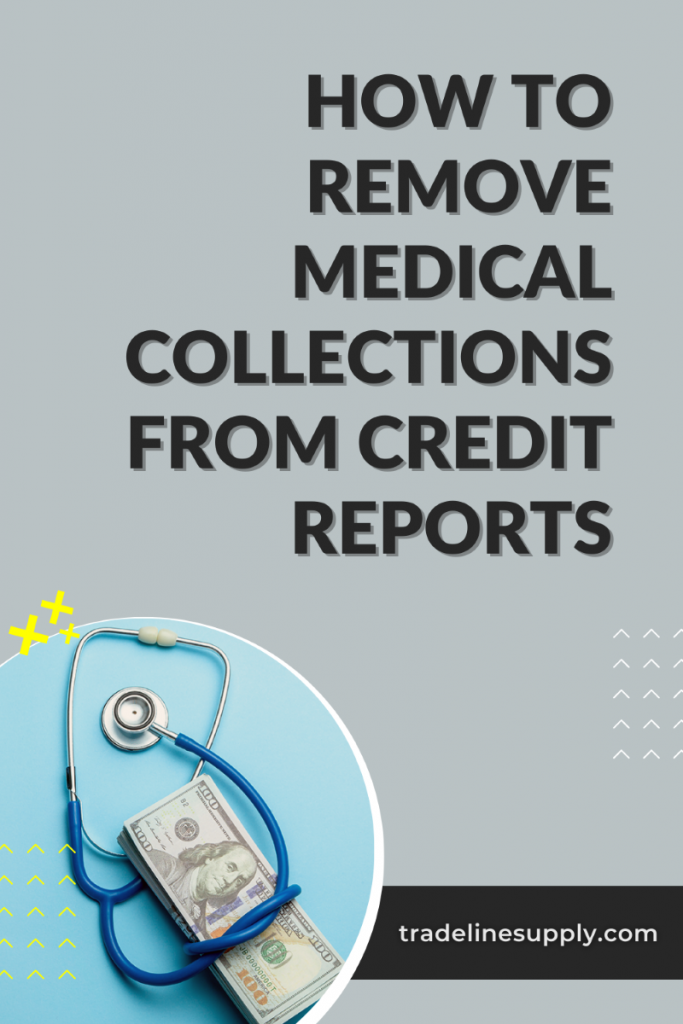 Anytime one of your bills heads to collections, that’s bad news for your credit score. But when it comes to medical debt, having a bill in collections is more common than you might think.
Anytime one of your bills heads to collections, that’s bad news for your credit score. But when it comes to medical debt, having a bill in collections is more common than you might think.
Depending on your situation, it’s possible to have the medical collection account removed from your credit report. Keep reading if you want to eliminate this negative item from your credit report.
Medical Collections on Your Credit Report
A medical emergency is stressful enough without adding in the financial component. But Americans face an added worry when dealing with a medical issue—the cost of care.
Here’s a closer look at how and why medical debt often ends up on credit reports.
Medical Billing Is Murky
Medical billing is a complicated industry to navigate. Any miscommunications between the provider and your insurance company can lead to big mistakes on your bill. If you disagree with the charges, it’s a tricky task to correct the issue.
While you try to sort things out with the insurance company and provider, you might be stuck with an oversized medical bill that you simply cannot afford. If you aren’t able to keep up with the payments, the bills might get sent straight to collections.
You Aren’t Alone
The Consumer Financial Protection Bureau (CFPB) found that approximately 20% of U.S. households have medical debt. Over 43 million credit reports have medical debt accounts on them.
Not only is medical debt a pervasive issue, but many consumers also struggle to meet the payments. In many households, the bill simply cannot be paid. At that point, it is sent to collections. If you have a bill in collections, you aren’t alone. As of 2021, 58% of bills in collections are medical bills. That’s a significant percentage!
The growing problem has come to the attention of the CFPB. Earlier this year, the organization announced its intention to work with partners to reduce coercive credit reporting. Other changes have come from the Department of Veterans Affairs, which will no longer report medical debt to credit reporting agencies until all methods of debt collection have been exhausted.
Additionally, the three major credit reporting bureaus will wait 365 days before adding medical collection debt to your report. The extended period of time should help you work out the details with your medical billing company. But if a deal cannot be reached, you at least have several months to work on paying it off before it hits your credit report. Hopefully, these organizations will push the crush of medical debt in the right direction.
How to Remove Medical Collections From Your Credit Report
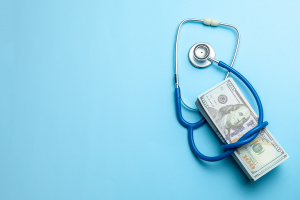
Medical collections on your credit report can drag it down. Although it would be nice to remove all medical debts, you’ll only be able to remove credit accounts that are inaccurate.
If you think that a medical debt in collections has unfairly landed on your credit report, here are the steps you can take to remove it.
Wait Until 2023
Depending on the size of your medical debt, you may just need to wait until early 2023 to see your medical debt automatically removed. If the medical debt in collections is less than $500, the three major credit bureaus will remove it from your report.
This policy change could have a major impact on your credit score, and there’s nothing you need to do to have the item removed in early 2023.
File a Credit Dispute
If a medical debt that shouldn’t be there is hanging out on your credit report, then file a credit dispute.
Before you file, look at the details listed on your credit report about the debt. If you spot any false information, make a note of that in your credit dispute. To finalize the dispute, file the appropriate forms with the credit bureaus reporting the mistaken collection.
Each credit reporting agency has 30 days to investigate a claim. If the agency agrees with your dispute, the medical debt will be removed. If the agency disagrees with your findings, then you’ll hear back in writing.
Work With Your Health Insurance Company
In some cases, you get stuck with medical debt when the health insurance company and the provider aren’t on the same page. If an insurance company is supposed to cover a cost, then it shouldn’t end up on your credit report. But miscommunications happen.
If you spot a medical bill in collections for a cost that your insurance company covered, then reach out to your insurance company. The insurer can pay the bill.
At that point, reach out to the credit bureaus to explain the situation. If the bill was covered by insurance, the credit bureaus can remove it from your report.
Settle Your Medical Debt
If you can afford to pay off your medical debt, or at least a portion of it, then it’s worth trying to negotiate a “pay for deletion” agreement.
In this case, you work out with the debt collector what amount of money would eliminate the debt. After the medical debt is paid off, the debt collector agrees to delete the medical debt from your record. Make sure to nail down this agreement in writing! Otherwise, you could miss the deletion.
Pay Off Your Medical Debt
Paying off medical debt is easier said than done. But the action will remove it from your credit report. That’s thanks to new rules set forth by the major credit bureaus.
Paid medical collections of any kind will no longer show up on your credit report. So, how can you make paying off debt a reality?
Start by choosing between the snowball and avalanche methods.
The debt snowball method focuses on the smallest balance first. The first step would be to list out all of your remaining balances. Start by paying off the smallest balance first with any extra money in your budget. Once the smallest loan is paid off, tackle the next smallest debt with any extra money in your budget plus the minimum payment of the debt you just eliminated. As you eliminate debts, the snowball will grow.
The avalanche method is a slightly different approach that focuses on the highest interest rate first. Start by paying off the loan with the highest interest rate. After that, tackle the debt with the next highest interest rate. Although it can take more time to feel like you’ve made progress, this is the most cost-efficient way to eliminate debt.
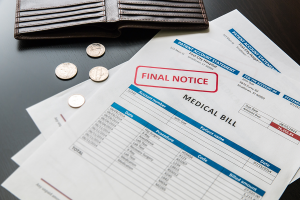
If you are balancing several debts, using one of these methods can help you climb out of debt for good. That means you’ll say goodbye to medical debt too!
Request a Goodwill Deletion
Whether you want to believe it or not, some debt collection companies are willing to offer a goodwill deletion. Essentially, this means the company deletes the medical debt from your credit report out of the kindness of their hearts.
Although this won’t always work, asking for a goodwill deletion never hurts. It’s important to note that this deletion happens after your medical debt is paid off. When drafting a letter, make sure to emphasize any financial hardships that made your medical debt difficult to pay off.
Work With a Credit Repair Company
It’s not always easy to get medical collections removed from your credit report. If you don’t have the time or energy to tackle this challenge, then consider hiring a credit repair company.
The right credit repair company can help you remove any inaccurate medical debt from your credit report. But before you hire a credit repair company, make sure the debt is a mistake. If it’s a legitimate debt, then a credit repair company cannot legitimately get it removed from your report. Only inaccurate information is up for removal.
How to Rebuild Your Credit Score
Medical collections on your credit report will drag your credit score down.
If you are able to remove the item from your credit report, that should give your credit score a boost.
Pay Bills on Time
The biggest factor influencing your FICO score is your payment history. Since your payment history makes up 35% of your credit score, making on-time payments a priority can really pay off in the long term.
Whenever possible, make on-time payments for all of your credit accounts. If remembering due dates is a challenge, then consider setting up automatic payments. Personally, I set up auto-pay for all of my bills. The technology makes sure that I never miss a payment.
But auto payment features won’t help if you are struggling to come up with the funds. If you know you are going to miss a payment due to cash flow issues, then reach out to your lender as soon as possible. Depending on your situation, the lender might be willing to work with you.
Some lenders are willing to change the due date or offer a temporary reprieve to help you prevent a missed payment. Although this might seem surprising, many lenders are willing to help out their loyal customers.
Lower Your Credit Utilization Ratio
One of the most important credit scoring categories is your debt-related metrics. This includes your individual and overall credit utilization ratios.
Your credit utilization ratio is based on your revolving credit account limits and how much you are using. For example, if you have a credit card with a $10,000 limit and a $3,000 balance, you’d have a credit utilization ratio of 30% on that account.
Generally, experts recommend keeping your credit utilization ratio below 30%, although it’s actually best to keep it below 10%. If the ratio is higher, it indicates to lenders that you rely heavily on credit. Some ways to lower your credit utilization ratio include getting a credit limit increase and paying off revolving account balances.
Consider a Credit-builder Loan
A credit-builder loan offers an opportunity to build credit. Plus, you’ll build savings at the same time. With a credit-builder loan, you won’t receive any funds upfront.
But you will be expected to start making payments immediately. As you make payments, the lender will report your activity to the credit bureaus. If you are making on-time payments, your credit score should improve. If you aren’t, a credit-builder loan could end up hurting your credit score.
Every time you make a payment, the lender will tuck and keep the interest portion for themselves. But the principal amount is stored in a special savings account or certificate of deposit with your name on it. At the end of the loan term, you’ll receive the savings you’ve built.
If you can keep up with the payments, a credit-builder loan will help you improve your credit.
Work With a Credit Repair Company

Medical debt might not be the only negative information you have on your credit report. Other mistakes on your credit report can drag it down. After all, a fraudster that steals your information to take out a loan won’t be paying it back.
Working with a reputable credit repair company can help you remove any inaccurate information from your credit report. In turn, this can help to improve your credit score.
If you don’t have the budget to hire a credit repair company, then consider tackling credit repair on your own. Start by identifying any mistakes in your credit report. If you see mistakes, file a dispute with your credit bureau. If the credit bureau agrees with your claim, they will fix the mistake.
You can often remove one or two mistakes easily. But if you are the victim of identity theft with a litany of mistakes, then working with a credit repair company is usually worth the expense.
The Bottom Line
The rules of medical collections on credit reports are changing. If you have a paid medical collection on your credit report, it will be removed in early 2023. After your medical collection debt is removed, take more steps to build credit.

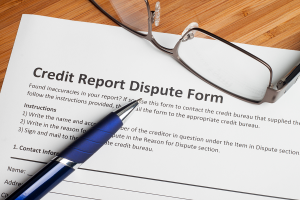

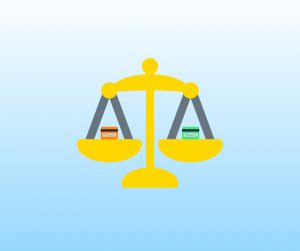


2 Comments
We’ve been told buying tradelines are illegal. Please clarify how you’re saying it’s ok to purchase them I’m confused.
https://tradelinesupply.com/are-tradelines-legal/